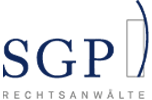
Professional Translation Agency for
Dutch Translations
With a good Dutch translation, your messages not only reach the audience but also have an impact on the readers. We are a professional translation agency for Dutch – and other languages. With us, you receive high-quality translations in the shortest time, perfectly adapted to the language, style, and culture of the recipients.
You will receive top-notch Dutch translations that do exactly what they are meant to do. It's that simple.
More than 110,000 satisfied customers
Be part of our success story! More than 110,000 satisfied customers already trust tolingo. When it comes to excellent translations, we are your first choice.















Why us: professional Dutch translations
Safety first
With our fourfold certification, we offer you maximum security
We take the handling of your data very seriously.
Our four certifications – ISO 17100 for translation services, ISO 18587 for post-editing of machine translations, ISO 9001 for quality management, and ISO/IEC 27001 for information security – confirm it: quality and data security are our top priorities.
Certified high quality
Our Dutch Translators Are All Native Speakers
As a Dutch translation agency, tolingo ensures that you receive only the best quality. Our certified Dutch translators are native speakers and deliver authentic, impactful translations without high costs.
The quality speaks for itself: Our quality management is TÜV certified (ISO 9001:2015).
Service at record speed
Fast Dutch Translations Worldwide
Sometimes, deadlines appear out of nowhere. Our translations to and from Dutch are always delivered quickly! Our Dutch translators are spread around the globe and provide high-quality work in no time. And when it’s really urgent, we also offer express options.


I am delighted. What I like most is the very friendly and personalized service, as well as the high quality of the translation.
Michael Meineke | Dinse GmbH
1/3
>
Especially positive is the flexibility with exceptional projects – tolingo is also open to creative solutions.
Miriam Senft | Chrono24
2/3
>
We are very satisfied with both the service and customer support. We are impressed with the quality of the service. tolingo is always reliable and, most importantly, punctual.
Lawrence Richards | Indievisuals Filmproduktion
3/3
>
goglobal
From German to Dutch (and back) with one click.
The Dutch language is a fascinating Germanic language spoken by more than 23 million people, primarily in the Netherlands and parts of Belgium. Its uniqueness lies in its similarity to German, which can make certain words and grammatical structures intuitively understandable for German speakers. However, Dutch also has its own particularities, such as the use of definite and indefinite articles and specific pronunciation rules.
For this reason, it can be beneficial to have texts translated from German into Dutch or vice versa by professional translators. These experts master the intricacies of the language and ensure precise and culturally appropriate translations that promote communication and understanding between the two languages.
Dutch Translations "Tailored to Your Needs"
Whether you need translations for everyday use, legal, technical, or marketing purposes – as an international translation agency, we know what to do and what to consider. Our native Dutch translators master the specialized terminology and speak the language of your target audience. And our highly specialized AI continuously learns to deliver flawless results in the shortest possible time.
Starting at €0.11/word – from German to Dutch or Dutch to German
How much does it cost to translate Dutch texts into German or German texts into Dutch? You can find out your individual price instantly in our shop. We are your Dutch translation agency "on the go": Simply upload your document and place your order in just a few clicks. In no time, you will receive your translated texts that make an impact – even in Dutch!
See our prices at a glanceDutch –
Tailored to You.
A Dutch translation is only good when its message resonates – and you are satisfied with it. Upon request, we can increase the speed, certify with stamp and signature, proofread following the four-eyes principle, format it to match the original layout, or ensure consistent language use.
These are our additional services, key areas of expertise, and popular language combinations for Dutch translations:
ADDITIONAL SERVICES
For Cross-Language Company Terminology!
Through targeted terminology management, we ensure the consistent use of specific technical terms across all your documents and language versions. This process guarantees that each term is applied exactly as per your definition, significantly improving the clarity and comprehensibility of communication. The result? Higher translation efficiency and significant cost savings.
If you need your translation ASAP, tolingo is your translation agency!
We generally provide professional translations in a short time. However, if an especially urgent request comes in, we offer the Express and Super-Express options. Your order will be prioritized, ensuring that you can complete your project in the shortest time possible.
If it needs to be accurate, tolingo is your translation agency!
To ensure translations are accurate, we offer various levels of proofreading and editing. Whether a specialized translation or machine translation is required, our professional translators ensure that your translations meet the highest quality standards. We work according to the "four-eyes principle" to minimize errors and guarantee a professional result.
If it needs to look good, tolingo is your translation agency!
In our professional translation agency, we place great importance on ensuring that, for example, technical documentation is not only accurate in content but also visually appealing. Our desktop publishing experts take care of the layout adjustments, ensuring that all images, graphics, and text, including line breaks and word hyphenation, are properly displayed in the target document. We work with programs such as Adobe InDesign, Illustrator, PowerPoint, and FrameMaker to ensure a high-quality appearance.
If the wording needs to be just right, tolingo is your translation agency!
We understand how important consistent wording is for businesses. That's why we offer the creation of a glossary, where specific terms for your project are collected. For all subsequent orders, these terms will be translated consistently and precisely according to the glossary, improving the quality of the translations. This not only contributes to consistency but also to cost efficiency.
If it needs to be consistent, tolingo is your translation agency!
To ensure consistent translations for recurring orders, creating a Translation Memory is almost always worthwhile. This tool acts as a memory storage for previously translated text passages. For subsequent orders with similar content, these translations are automatically retrieved without being recalculated. This ensures you always receive consistent and high-quality translations, offering great value for money.
If signatures & stamps are required, tolingo is your translation agency!
In our professional translation agency, we offer certified translations carried out by sworn professional translators. These translations are officially recognized by offices, authorities, and courts, and are carefully stamped with the appropriate seal and official certification note. International companies, in particular, can benefit from our services.
With our customized transcription services, we guarantee an accurate conversion of your audio and video files into precise text (with or without subsequent translation). Our approach ensures that every nuance of the language is captured and reproduced in detail. What’s the result? Seamless communication and significant savings in time and cost.
INDUSTRIES
Our translators are particularly skilled in the following areas:
LANGUAGES
At the translation agency tolingo, we translate in more than 220 language combinations. Many of these include Dutch as a source or target language – particularly popular are:
Find more combinations in our language overview.

Go for it!
Your perfect solution is here.
Goncalo Silva
Key Account Manager
0800 55 133 00
service@tolingo.com
You need a professional Dutch translator for a large project? Get advice from us! My goal: your texts should be optimally translated – in every language.
gofast
From 0.11 €/word –
to German–Dutch or Dutch–German
How much does it cost to translate Dutch texts into German or German texts into Dutch? In our shop, you will instantly get your individual price. We are your translation agency for Dutch “on the go”: Simply upload your document and order with just a few clicks. And soon after, you’ll receive your texts that work – in every language!
Important Questions – and All the Answers
A translation from Dutch into another language starts at 0.12 €/word. A translation into Dutch starts at a price of 0.08 €/word.
The price for each translation depends on several factors, including the combination of source and target language, the translation method, and potentially the subject area. Ultimately, the total cost is also influenced by the text volume, the desired additional services, and the delivery date (for translations with express options).
The delivery time for a Dutch translation – and for any translation in general – mainly depends on the volume of the text. Once we know the volume of your order, we will send you an offer with a guaranteed delivery date.
In principle, our processes are so streamlined and optimized that we can handle every translation quickly. Smaller translation projects are often delivered within 1–2 business days.
If you need a translation urgently, you can shorten the delivery time with our Express or Super-Express options. We will prioritize the order and deliver it even faster.
A Translation Memory is a type of memory storage or personalized glossary and is beneficial for regular translation needs. All translations are stored in a database, and translated paragraphs and text sections are reused for future translation projects. This improves the quality and consistency of your texts while saving you time and money.
For more complex projects, you can easily request and commission them by phone or email.
T 0800 55 133 00
E service@tolingo.com
Let us know what is important for your translation, and we will provide you with a non-binding offer with a guaranteed delivery date. If you have any questions, we are happy to advise you on our translation solutions and additional services.
TABLE OF CONTENTS
Knowledge to go
Where Dutch Is Spoken
Approximately 28 million people worldwide speak Dutch as their native language. Of these, around 17 million live in the Netherlands, 6 million in Belgium (Flanders), and about 600,000 in Suriname, which was a Dutch colony until 1975. Dutch is also an official language in the Caribbean countries of Aruba, Curaçao, and Sint Maarten. Additionally, it is one of the official languages of the European Union.
Translating into Dutch allows you to reach people across the globe. In addition to correct grammar and tone (more on that below), subject-specific adaptation is a key quality criterion—especially in the business world, even if it might be less critical in everyday contexts. Industry-specific terminology should (or must) always be accurately and precisely rendered in translations. This applies to medical translations as well as to legal translations. That’s why you should always have your Dutch specialized translations created by native speakers with the necessary expertise in the relevant field.
The Tone Shapes the Meaning – Even in Translation
Dutch is a tonal language, where the meaning of a word is influenced not only by its sequence of sounds but also by the pitch or tone pattern. In other words: Identical sequences of sounds pronounced with different stresses or intonations can have different meanings. For instance, the word papa (unstressed) means mashed potatoes in Dutch, but if the first syllable is stressed, it becomes papá, meaning Dad. Additionally, pitch helps indicate questions or distinguish between statements and commands.
In written communication, Dutch tonal nuances are conveyed through punctuation and the choice of words and expressions. For example, a question mark can appear at the end of a sentence without it starting with a question word. Using modal particles (such as but, actually, just...) and adverbs can highlight the intonation and emphasis in a sentence. A professional translation accounts for these linguistic subtleties and precisely translates both content and meaning into or from Dutch. To ensure your messages resonate correctly with your audience, you should always engage a translation agency.
Dutch Isn’t Enough – Why You Need a Dutch Translation
Many people think Dutch and Hollands (Hollandic) are the same. Technically, they’re not. Hollandic is a variant of Dutch and is often mistakenly used as a synonym. In reality, Hollandic is a dialect native to the Dutch provinces of North and South Holland. Today, however, it is spoken and understood throughout the country.
Still, some Dutch speakers can be sensitive to the misuse or interchange of these terms. Therefore, you should always translate your texts into Dutch unless you specifically aim to address a particular group, such as people in North or South Holland. In such cases, it’s often worth tailoring the translation to regional and cultural linguistic habits, a process known as localization. If you want to learn more about this: we’ve summarized the differences between translation and localization in our guide.






